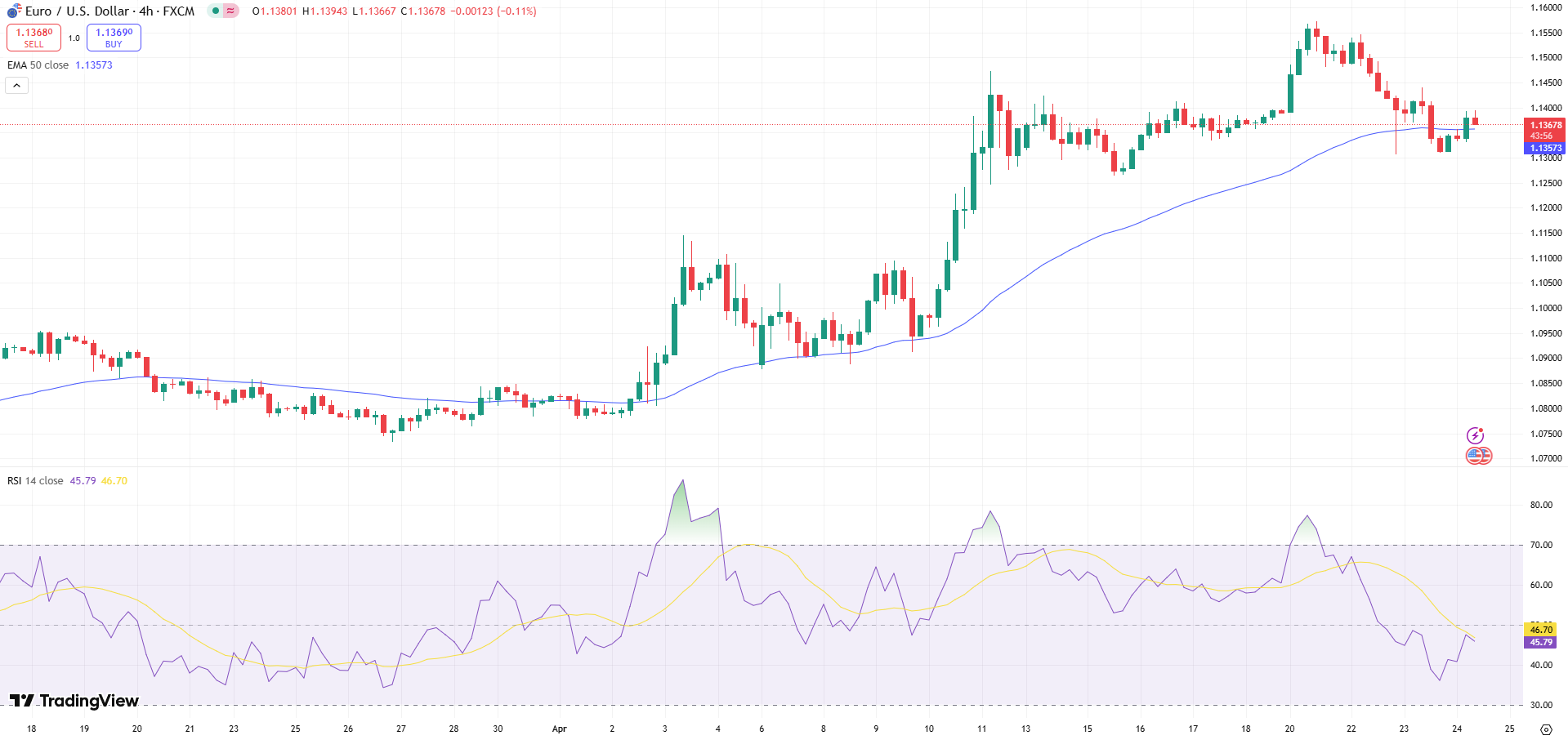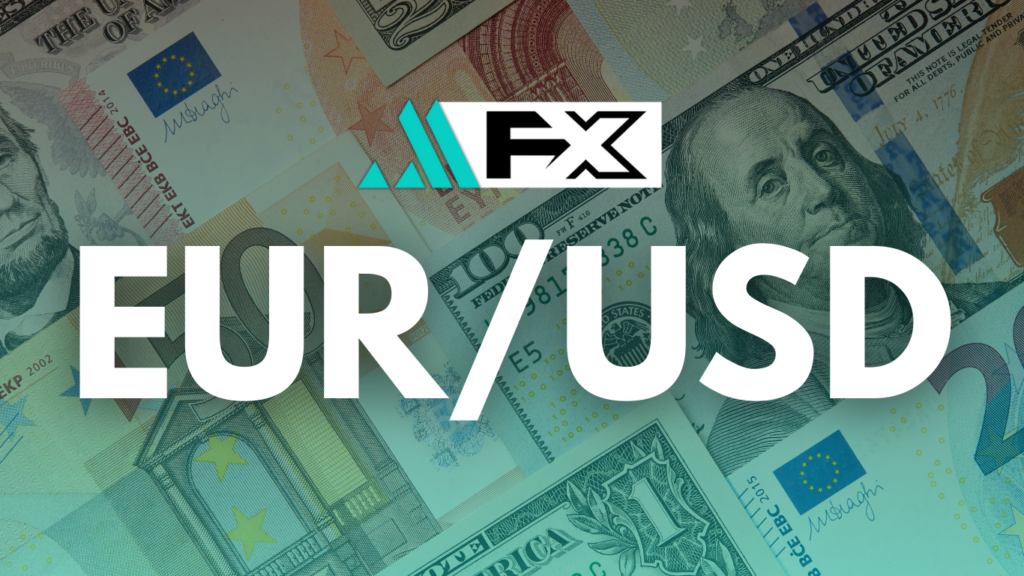The euro gained traction against the U.S. dollar on Thursday, with EUR/USD climbing toward 1.1400 after stronger-than-expected German business sentiment data. The latest IFO Business Climate Index, a key gauge of economic morale in Germany, came in at 89.4, beating market expectations of 88.7 and signaling a modest rebound in confidence across Europe’s largest economy.
The upward move in the pair was also underpinned by renewed pressure on the U.S. dollar, driven by market concerns over trade policy clarity from the White House. While the dollar attempted a recovery mid-week, sentiment soured again following conflicting signals on potential tariff reductions with China and Japan.
Despite the rally, EUR/USD still trades below its 20- and 50-period Simple Moving Averages (SMA) on the 4-hour chart, while the Relative Strength Index (RSI) lingers under the neutral 50 level—suggesting cautious optimism rather than a full-fledged bullish trend.
Technical Setup Still Mixed
While EUR/USD appears to be building short-term upward momentum, technical indicators offer a mixed picture.
Key Support Levels:
- 1.1340 – Ascending channel lower boundary
- 1.1280 – Static level from prior lows
- 1.1220 – 100-period SMA
Resistance Levels:
- 1.1400 – 50-period SMA
- 1.1450 – 20-period SMA
- 1.1500 – Major psychological level
With price action still below major moving averages, buyers may need stronger confirmation before committing to further upside targets.
Eyes on U.S. Data for Next Move
In the hours ahead, traders will shift focus to several key U.S. economic reports, which could reshape sentiment around the dollar and drive EUR/USD’s next direction.

The Initial Jobless Claims report is expected to show a slight uptick in weekly claims to 221,000, up from 215,000. A figure below 200,000 could lend support to the dollar and push EUR/USD lower, while a print above 230,000 would likely weaken the greenback further.
Additionally, March data on Durable Goods Orders and Existing Home Sales will round out the day’s releases. These figures could add to the volatility, especially if they diverge sharply from expectations.
Conclusion:
EUR/USD’s climb toward 1.1400 reflects both improving eurozone confidence and persistent pressure on the U.S. dollar. However, upcoming U.S. data could be decisive for the pair’s next leg.


